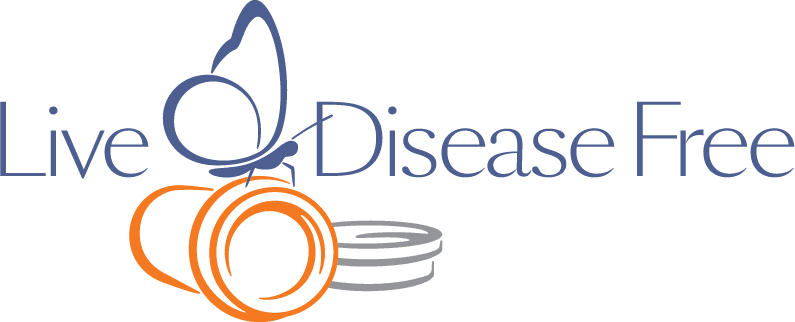How a natural molecule—and a forgotten malaria drug—could unlock real healing for multiple sclerosis
When most people think of histamine, they think of allergies—itchy eyes, runny noses, and the need for antihistamines. In recent years, histamine has also been blamed for a range of chronic symptoms, from digestive issues to fatigue, leading to growing interest in low-histamine diets, histamine intolerance, and conditions like mast cell activation syndrome (MCAS). As a result, histamine is often seen as something harmful that must be avoided or suppressed.
But exciting research is challenging that view—especially in the context of multiple sclerosis (MS). A 2022 study published in the International Journal of Molecular Sciences reveals that histamine may actually play a powerful healing role in MS. It supports brain repair, protects nerves, and may even help reverse the damage caused by chronic inflammation and infection.
Even more compelling, researchers identified existing medications—including a decades-old malaria drug—that could be repurposed to treat MS by targeting histamine pathways and potentially killing protozoa parasites which are linked to MS.
This research powerfully confirms what we’ve been teaching at Live Disease Free for years:
MS is an infectious disease—not an autoimmune mystery—and it can be treated.
What Is Histamine and Why Does It Matter?
Histamine is a naturally occurring molecule your body produces in response to:
- Infection
- Injury
- Allergens
It acts like the body’s first responder—activating the immune system, increasing blood flow, regulating gut and brain function, and initiating tissue repair.
In MS, where the immune system is reacting to chronic infections in the gut and central nervous system, histamine levels are often elevated—especially in the spinal fluid. This isn’t a sign of dysfunction; it may be a sign that the body is combating invaders and trying to heal.
What the Study Found
The researchers goal was to identify medications that could positively influence MS-related genes.
Here’s what they found:
✅ Histamine supports remyelination by helping oligodendrocyte precursor cells mature and rebuild the protective myelin coating around nerves.
✅ Histamine is elevated in the cerebrospinal fluid (CSF) of MS patients, pointing to a potential protective role in the brain.
✅ The enzyme HNMT, which breaks down histamine in the brain, is increased in MS—especially in cells that form scar tissue. This may prevent histamine from doing its healing work.
✅ Three repurposed drugs—amodiaquine, rupatadine, and diphenhydramine—stood out as top candidates to support healing in MS.
Amodiaquine: The Antiparasitic Link
One of the most exciting findings was amodiaquine, a drug historically used to treat malaria. It works by binding to parasitic DNA and blocking RNA and protein production, effectively stopping parasites from replicating.
But it also inhibits HNMT, the enzyme that breaks down histamine in the brain. This allows histamine to accumulate where it’s most needed—in the central nervous system.
So, amodiaquine supports MS recovery in two key ways:
- It boosts histamine, helping protect and repair the nervous system.
- It kills specific parasites linked to MS.
MS and Malaria: An Overlooked Connection
Studies have long noted an intriguing overlap between MS and malaria. In regions where malaria is common, MS rates are often much lower. One explanation is that people treated with antimalarial drugs like amodiaquine may have unknowingly eliminated these protozoa parasites that would have triggered MS later in life.
This strengthens the case that MS is not a mysterious autoimmune disease, but a chronic infection of the brain and spinal cord—driven by parasites, fungi, and bacteria.
MS Is Not Autoimmune—It’s Infectious
At Live Disease Free, we’ve helped hundreds of students recover from MS by identifying and treating underlying infections. The immune system isn’t malfunctioning—it’s doing its job by fighting off invaders.
When these infections are left untreated, inflammation becomes chronic. That’s when the nervous system breaks down. But when we remove the parasites and support the healing environment, the body can restore itself—and histamine may be part of that healing toolkit.
Forgotten Pioneers of Histamine Therapy
Long before this recent study, a few courageous doctors were already seeing the healing potential of histamine—and one such doctor was using it to help MS patients recover.
🏥 Dr. Hinton D. Jonez: My Fight to Conquer Multiple Sclerosis (1952)
In the 1950s, Dr. Hinton D. Jonez treated over 300,000 MS patients at the Saint Joseph’s Hospital in Tacoma using a histamine-based protocol. His book documented miraculous recoveries:
“Here you will read of the miracles… where the blind were made to see, the cripple to walk, and the dying to live again.”
He didn’t claim to cure MS, but like insulin for diabetes, he developed a way for patients to live fully and without fear.
He accepted no money for his treatments. And yet, despite his success, regulatory authorities shut him down—not because his therapy was unsafe, but because it threatened powerful commercial interests.
🩺 Dr. Ravikovich: The Plot Against Asthma and Allergy Patients
Decades later, Dr. Ravikovich, a Toronto physician, used histamine therapy to successfully treat asthma, allergies, and chronic conditions. His work was published in medical journals and presented internationally.
Yet, like Dr. Jonez, he faced severe suppression from medical regulators. His book details how corporate and political interests often silence effective treatments—not to protect patients, but to protect profits.
Why Their Work Was Suppressed—And Why It Matters Now
These stories remind us that scientific breakthroughs are often met with resistance—not because they’re unsafe or unsupported, but because they threaten powerful commercial interests and the profits of large corporations.
These physicians were ahead of their time. They saw histamine not as a problem, but as a healing force—especially when infections are treated, and the immune system is no longer overactivated.
Thanks to current research, we can now validate their clinical success with hard science—and build on it.
A Better Way Forward
The three most promising repurposed drugs identified in the study are:
- Amodiaquine – Antiparasitic and histamine booster
- Rupatadine – H1 antihistamine and anti-inflammatory
- Diphenhydramine – Common allergy medication with neuroprotective potential
These drugs may:
- Reduce inflammation
- Support remyelination
- Modulate immune activity
This opens the door to real recovery—not just symptom management.
Your Immune System is Not Broken—There Is Hope
If you or a loved one has MS, I want you to know:
- You are not broken.
- Your immune system is not attacking you for no reason.
- MS is caused by chronic infections—and it is treatable.
- And histamine, long misunderstood, may be part of the solution.
Learn More and Take Action
At Live Disease Free, we help health-conscious men and women treat the root cause of MS and other chronic diseases by targeting infections, restoring gut health, and supporting the body’s healing systems. Together, we are changing the way MS is understood—and treated.
There are real solutions to recover from parasites today!
To restore health, we must focus on treating the cause of inflammation, which are parasites. First, identify the enemy (parasites), then support the body and treat the parasites while following a holistic approach. When parasitic infections are treated effectively, we can overcome inflammation or disease.
If you’re frustrated with the fact that our standard of care STILL doesn’t offer a real solution for treating MS and other diseases, then click on the link below to watch Pam Bartha’s free masterclass training and discover REAL solutions that have allowed Pam and many others to live free from MS and other diseases.
CLICK Here to watch Pam’s masterclass training
References:
https://pmc.ncbi.nlm.nih.gov/articles/PMC9181091/
https://direct-ms.org/wp-content/uploads/2018/01/TransdermalHistamine.pdf
https://www.sciencedaily.com/releases/2011/01/110131133317.htm
https://pmc.ncbi.nlm.nih.gov/articles/PMC6334194/

Clinically diagnosed with multiple sclerosis at the age of 28, Pam chose an alternative approach to recovery. Now decades later and still symptom free, she coaches others on how to treat the root cause of chronic disease, using a holistic approach. She can teach you how, too.
Pam is the author of Become a Wellness Champion and founder of Live Disease Free. She is a wellness expert, coach and speaker.
The Live Disease Free Academy has helped hundreds of Wellness Champions in over 15 countries take charge of their health and experience profound improvements in their life.

